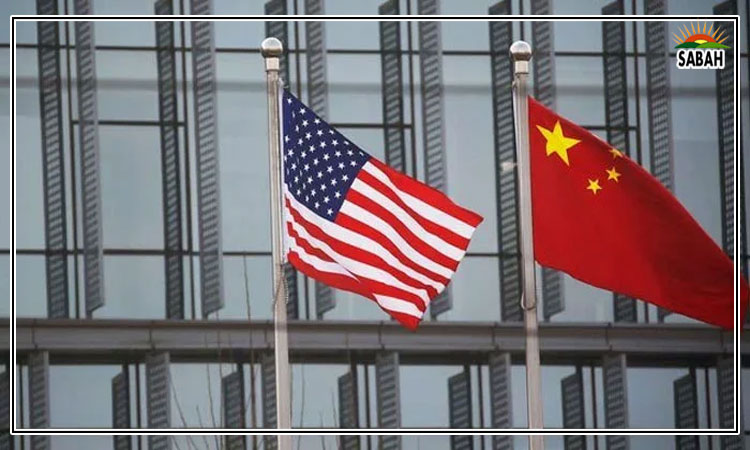How China is outsmarting the US in Latin America…Azhar Azam
In a latest sign of booming relations, Chinese President Xi Jinping and Brazilian President Lula da Silva upgraded their bilateral relationship and struck more than three dozen agreements including on agriculture, trade, investment, infrastructure, industry, science and technology and energy.
Bilateral relations have shown significant dynamism with Beijing being Brasilia’s largest trading partner since 2009, one of the main sources of foreign investment and biggest export destination. Brazil maintains a whopping $51 billion trade surplus with China and its exports to Beijing have surpassed the combined sales to the EU and the US.
China, once a major buyer of the US soybeans, has been diversifying its farm purchases from America, and Brazil is emerging as a ley beneficiary of this trade war. In 2023 alone, the South America agriculture powerhouse shipped more than $60 billion of agricultural products to Beijing, up $9.5 billion from 2022. Brasilia continues to eat the US share by flooding the Chinese markets with its corns and soybeans.
Donald Trump’s return as American president is already helping Brazil as new agreements have opened the Chinese market for four new Brazilian agri products: sorghum, fresh grapes, sesame and fishmeal. Since China buys almost all of its sorghum from America, it indicates that Beijing has made the first move on the geopolitical chessboard to put pressure on Trump, anticipating the coming January storm when he assumes office and dials up his trade war.
One of Lula’s successes in his last year’s visit to Beijing was resumption of Brazilian beef exports. This by the end of 2023 allowed Brazil to export more than $8.2 billion of meat to China, forcing Brazil’s major competitors including the US to slow their production. Brazil, unequivocally, is scooping up the opportunity to boost its agricultural exports to China at the expense of the US.
Brazil has been pursuing an independent and non-aligned foreign policy. Under Lula, Brasilia has become fiercely emboldened in its international approach. Declaring his country’s relations with China “extraordinary”, hoping them to “go beyond” trade, the Brazilian president in 2023 stated: “Nobody can stop Brazil from continuing to develop its relationship with China.” This represented his blatant pursuit of autonomy in international relations and opposition to the Western decoupling (now de-risking) from the world’s largest economy.
Last year, Lula and Xi sought to renew space cooperation and build a seventh satellite in the China-Brazil Earth Resources Satellite (CBERS) programme. The CBERS-6 would be launched from China in 2028, improving Amazon monitoring, providing more information on deforestation, agriculture, droughts, land use and water reservoirs.
Even though the recent agreement between China’s SpaceSail and Brazil’s Telebras – aiming to challenge Elon Musk’s Starlink by delivering satellite communication services and broadband internet services to Brazil – will account for just 0.5% of the Brazilian total broadband market, it is blow to the US, seeking to hobble China’s tech advancement globally, and the manifestation of Lula’s vision to deepen cooperation with China beyond trade.
Brazil and China are partnering to lead the global south, pushing for a more central role of the developing and under-developed economies in the multilateral institutions and supporting their development through science and technological innovation. While Lula is positioning himself as a new leader of the global south and envoy of peace, climate and global governance reform, Xi is patting Brasilia and Beijing to “assume the great historical responsibility of safeguarding the common interests” of the developing world.
Both Brazil and China have agreed to find synergies between the Brazilian development plans and Chinese Belt and Road Initiative. This effectively allows Brasilia to benefit from China’s mega infrastructure plan without inviting any resentment from the US, which is the top source of foreign direct investment in Brazil and where Brazil last year dispatched $29.9 billion of manufactured goods to advance its trade diversification. In doing so, Brazil has successfully maintained a delicate balance between the two world powers.
One of the major US concerns is that China can leverage its influence in Latin America to undermine its interests and national security. Yet in contrast to the US Indo-Pacific strategy that relies on security alliances to counter China, this approach is driven by economic partnerships that would help Beijing to deter Washington from threatening the Chinese interests in the Indo-Pacific.
And China is being helped by the US indifference vis-à-vis its neighbours. Washington’s emphasis on vested interests and great power rivalries over the years diminished its influence in Latin America, leaving a vacuum for China to come and fill in. For instance, Beijing created some 1.8 million jobs in Argentina, Brazil, Chile and Mexico between 1995 and 2016 through trade, investments and infrastructure projects, helping elevate its positive perception in the key regional countries. Opening of a Chinese-funded mega port in Peru is the latest trailer of China’s growing influence in the US backyard, pushing American officials on defensive.
After Xi’s trip, Brazil and China have emerged as like-minded countries. Yet unlike the US that deploys this term as a reference to contain China or dubs it a challenge, Beijing are Brasilia are using this characteristic to jointly confront the global challenges, build a multipolar world, reform the international governance, promote peace and stability, and accelerate the development of the global south. This empathy will trigger discomfort in the US with no clue whatsoever how to respond to the cascading Chinese diplomatic blitz.
COURTESY ![]()












